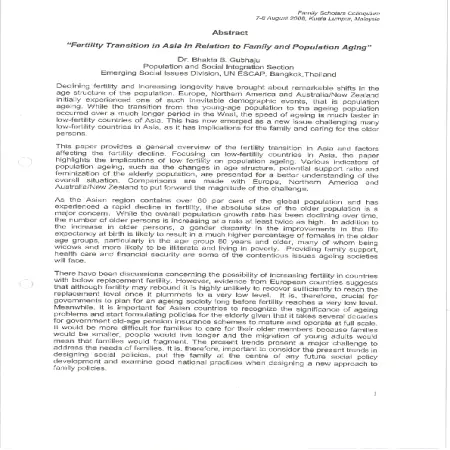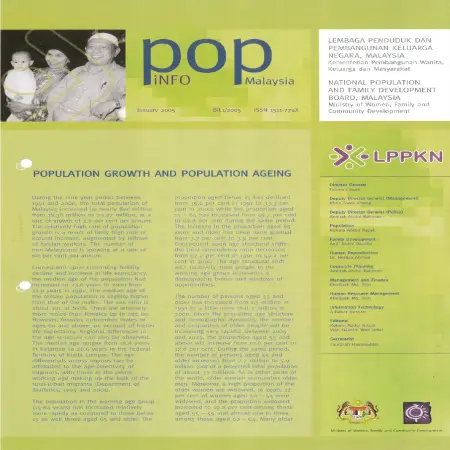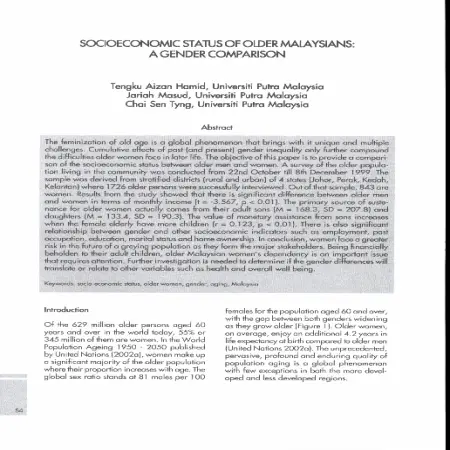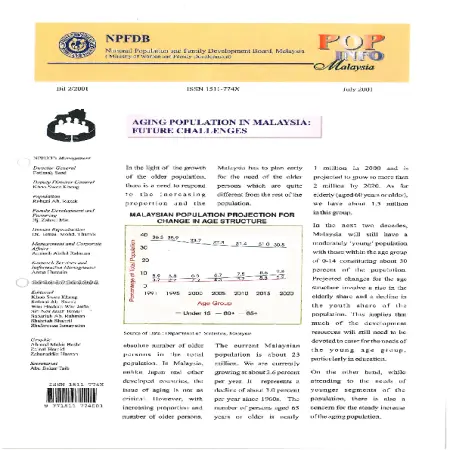TOPICS
Results for Topics : "Ageing"
|
|
Fertility transition in Asia in relation to family and population aging
Item Type: Conference or Workshop Item
Editor:
Year: 00/00/2006
Abstract: Declining fertility and increasing longevity have brought about remarkable shifts in the age structure of the population. Europe, Northern America and Australia/New Zealand initially experienced one of such inevitable demographic events, that is population aging. While the transition from the young-age population to the aging population occurred over a much longer period in the West, the speed of aging is much faster in low-fertility countries of Asia. This has now emerged as a new issue challenging many low-fertility countries in Asia, as it has implications for the family and caring for the older persons. This paper provides a general overview of the fertility transition in Asia and factors affecting the fertility decline. Focusing on low-fertility countries in Asia, the paper highlights the implications of low fertility on population aging. Various indicators of population aging, such as the changes in age structure, potential support ratio and feminization of the elderly population, are presented for a better understanding of the overall situation. Comparisons are made with Europe, Northern America and Australia/New Zealand to put forward the magnitude of the challenge. As the Asian region contains over 60 percents of the global population and has experienced a rapid decline in fertility, the absolute size of the older population is a major concern. While the overall population growth rate has been declining over time, the number of older persons is increasing at a rate at least twice as high. In addition to the increase in older persons, a gender disparity in the improvements in the life expectancy at birth is likely to be illiterate and living in poverty. Providing family support, health care and financial security are some of the contentious issues aging societies will face. There have been discussions concerning the possibility of increasing fertility in countries with below replacement fertility. It is, therefore, crucial for governments to plan for an aging society long before fertility reaches a very low level. Meanwhile, it is important for Asian countries to recognize the significance of aging problems and start formulating policies for the elderly given that it takes several decades for government old-age pension insurance schemes to mature and operate at full scale. It would be more difficult for families to care for their older members because families would be smaller, people would live longer and the migration of young adults would mean that families would fragment. the present trends present a major challenge to address the needs of families. It is, therefore, important to consider the present trends in designing social policies, put the family at the centre of any future social policy development and examine good national practices when designing a new approach to family policies.
|
|
|
|
|
|
Population growth and population ageing
Item Type: Newsletter
Editor:
Year: 00/01/2005
Abstract: Population ageing has significant implications on the communities, families and the individuals, in the context of social change. With increasing age at marriage, more and more people are delaying family formation such that many retirees still have to support their young children. This means that there will be fewer resources for the older persons becomes increasingly serious as their earnings diminish after retirement. As life expectancy increases, the families may have to cope with more that one generation of older persons.
|
|
|
|
|
|
Socioeconomic status of older Malaysians: a gender comparison
Item Type: Article
Editor:
Year: 00/01/2004
Abstract: The feminization of old age is a global phenomenon that brings with it unique and multiple challenges. Cumulative effects of past (and present) gender inequality only further compound the difficulties older women face in later life.The objective of this paper is to provide a comparison of the socioeconomic status between older men and women. A survey of the older population living in the community was conducted from 22nd October till 8th December 1999.The sample was derived from stratified district (rural and urban) of 4 states (Johor, Perak, Kedah, Kelantan) where 1726 older persons were successfully interviewed. Out of that sample, 843 are women. Results from the study showed that there is significant difference between older men and women in terms of monthly income(t=-3.567,p<0.01). The primary source of sustenance for older women actually comes from their adults sons (M=168.3, SD=207.8)and daughters (M=133.4,SD=190.3). The value of monetary assistance from sons increases when the female elderly have more children (r=0.123,p<0.01). There is also significant relationship between gender and other socioeconomic indicators such as employment, past occupation, education, marital status and home ownership. In conclusion, women face a greater risk in the future of a greying population as they form the major stakeholders. Being financially beholden to their adult children, older Malaysian women's dependency is an important issue that requires attention. Further investigation is needed to determine if the gender differences will translate or relate to other variables such as health and overall well being.
|
|
|
|
|
|
Aging population in Malaysia: future challenges
Item Type: Newsletter
Editor:
Year: 00/07/2001
Abstract: In the light of the growth of the older population, there is a need to respond to the increasing proportion and the absolute number of older persons in the total population. In Malaysia, unlike Japan and other developed countries, the issue of aging is not as critical. However, with increasing proportion and number of older persons, Malaysia has to plan early for the need of the older persons which are quite different from the rest of population.
|
|
|
|
|
|
Study on childcare & parenting styles among working parents in Peninsular Malaysia 1998
Item Type: Research Report
Editor:
Year: 00/00/1998
Abstract: The Study on Childcare and Parenting Styles among working Parents in Malaysia is one of the three research issues on the family that has been identified by the Ministry of National Unity and Social Development under the "Pelan Induk Tindakan Sosial (PINTAS)". This survey is timely in view of the many challenges faced by Malaysian families who have been affected directly or indirectly by modernisation, urbanisation and industrialisation as a result of socio-economic development. Female labour force participation has increased from 37 per cent in 1970 to 42 per cent in 1991 and is expected to reach 52 per cent by year 2000. The objectives of the study were: • To study the current situation in childcare arrangements among working parents and to elicit suggestions from them regarding improvements in childcare. • To study parenting styles among working parents and to make recommendations for better parenting practices. • To use findings from the study as an input towards designing strategies and programs for the betterment of families. • To obtain indicators on childcare and parenting for the monitoring of goals and targets in the National Plan of Action on Children.
|
|
|
|









